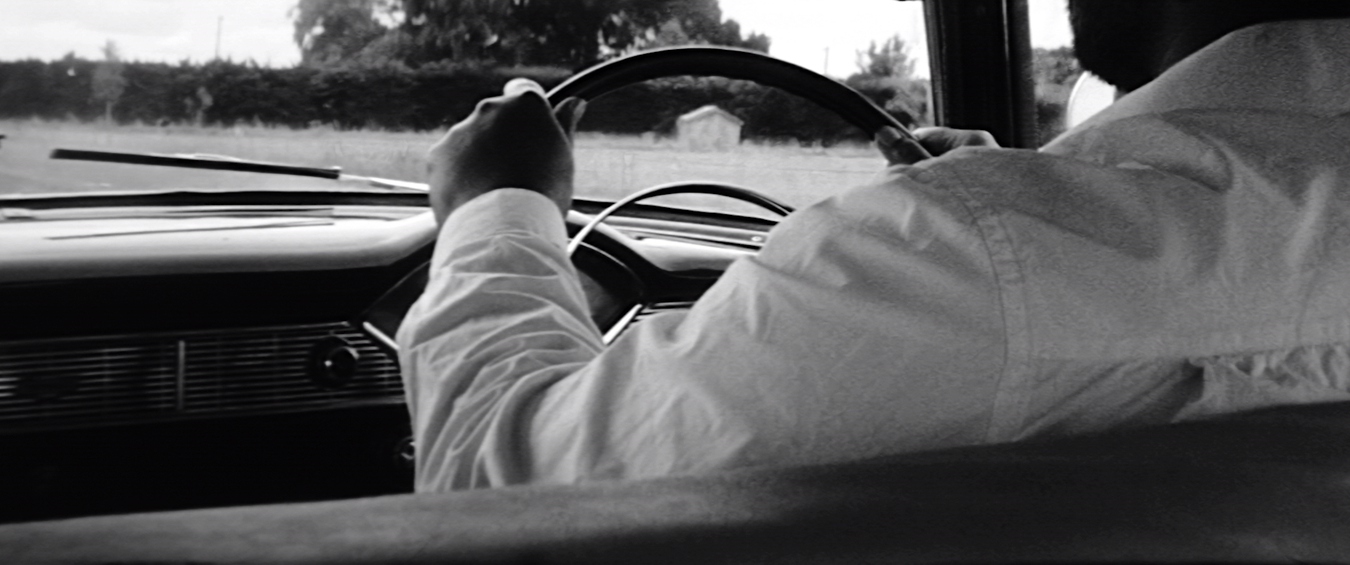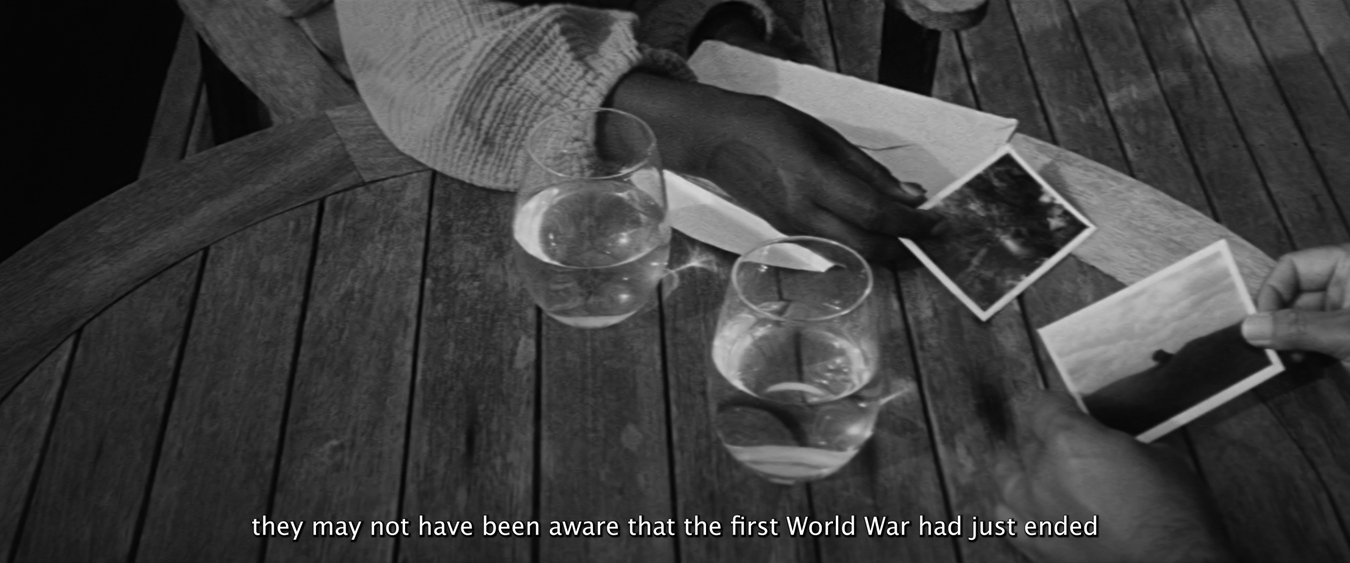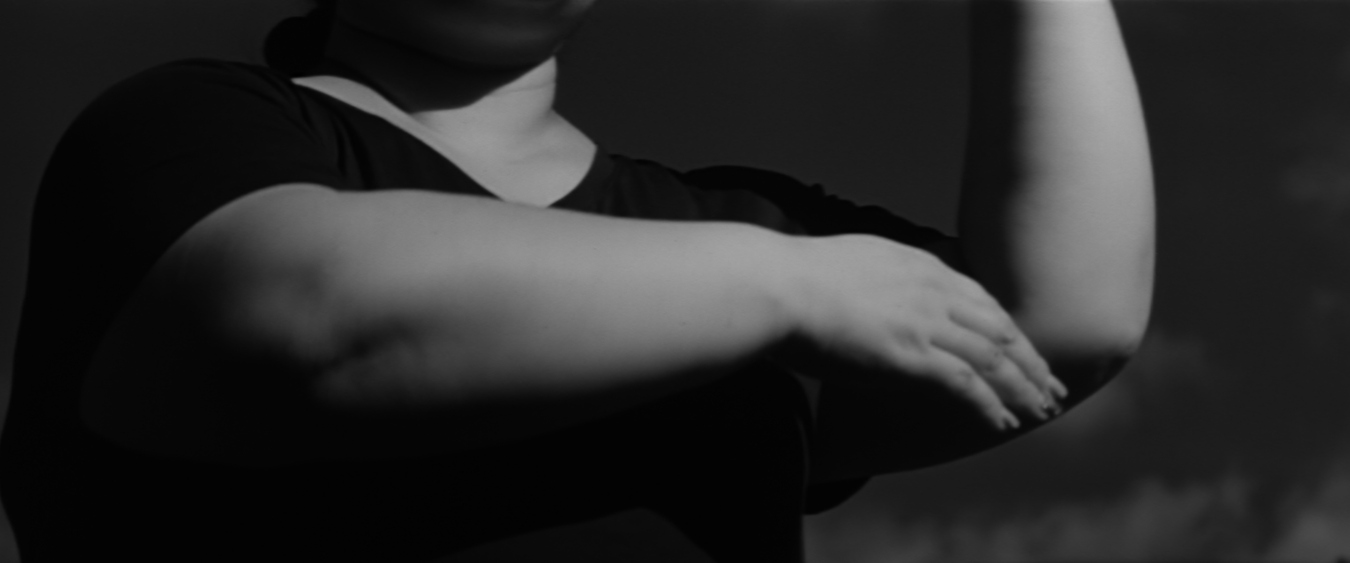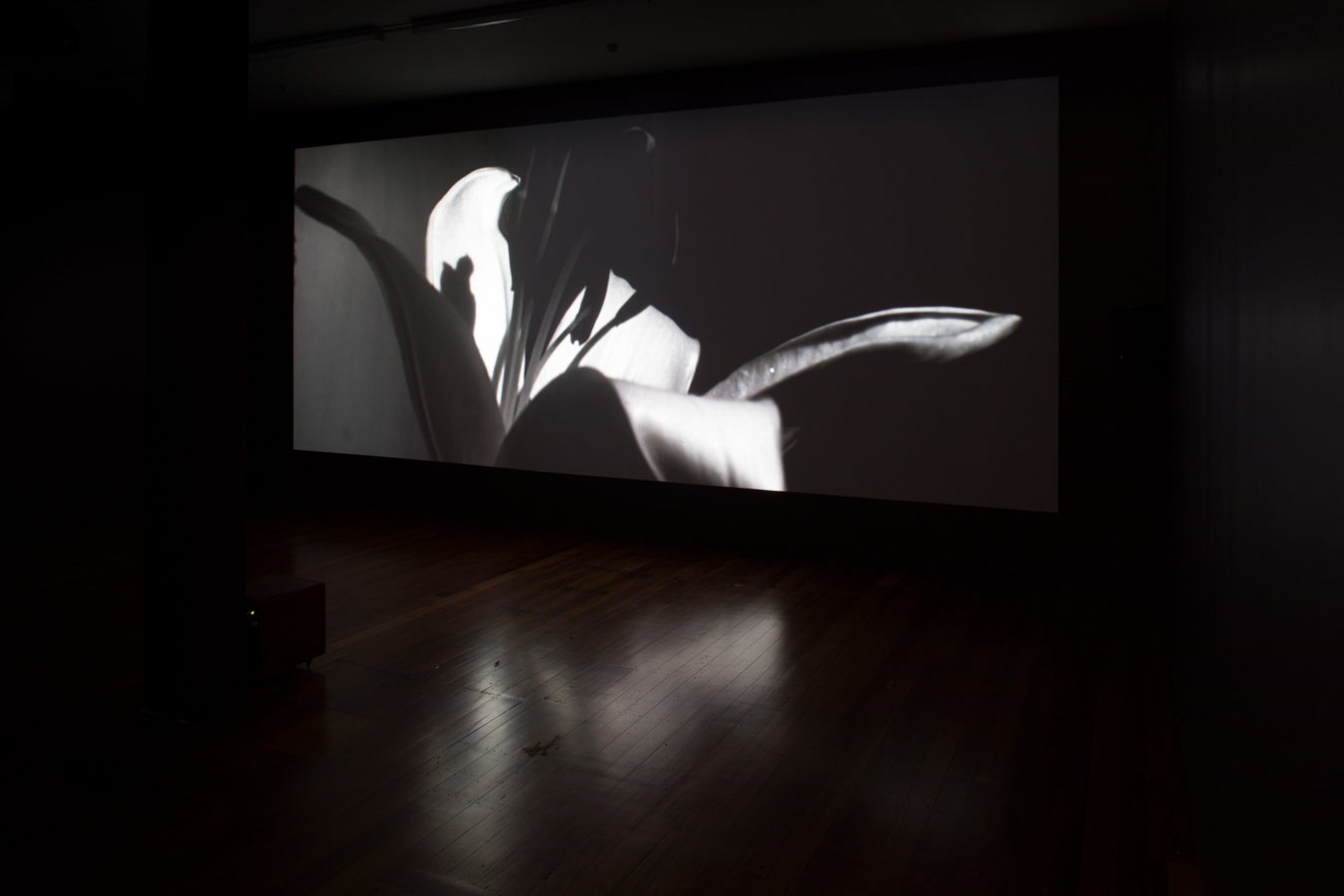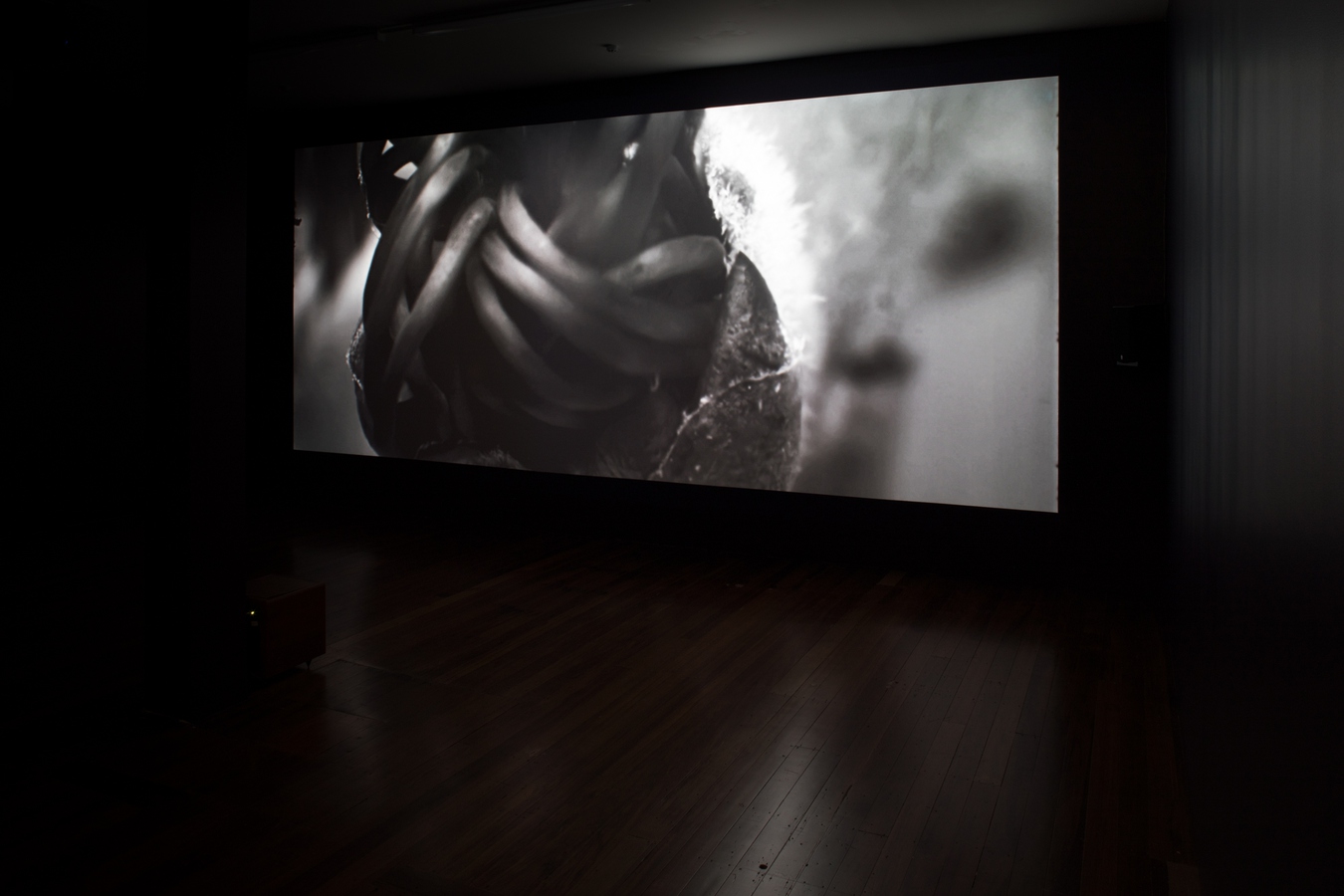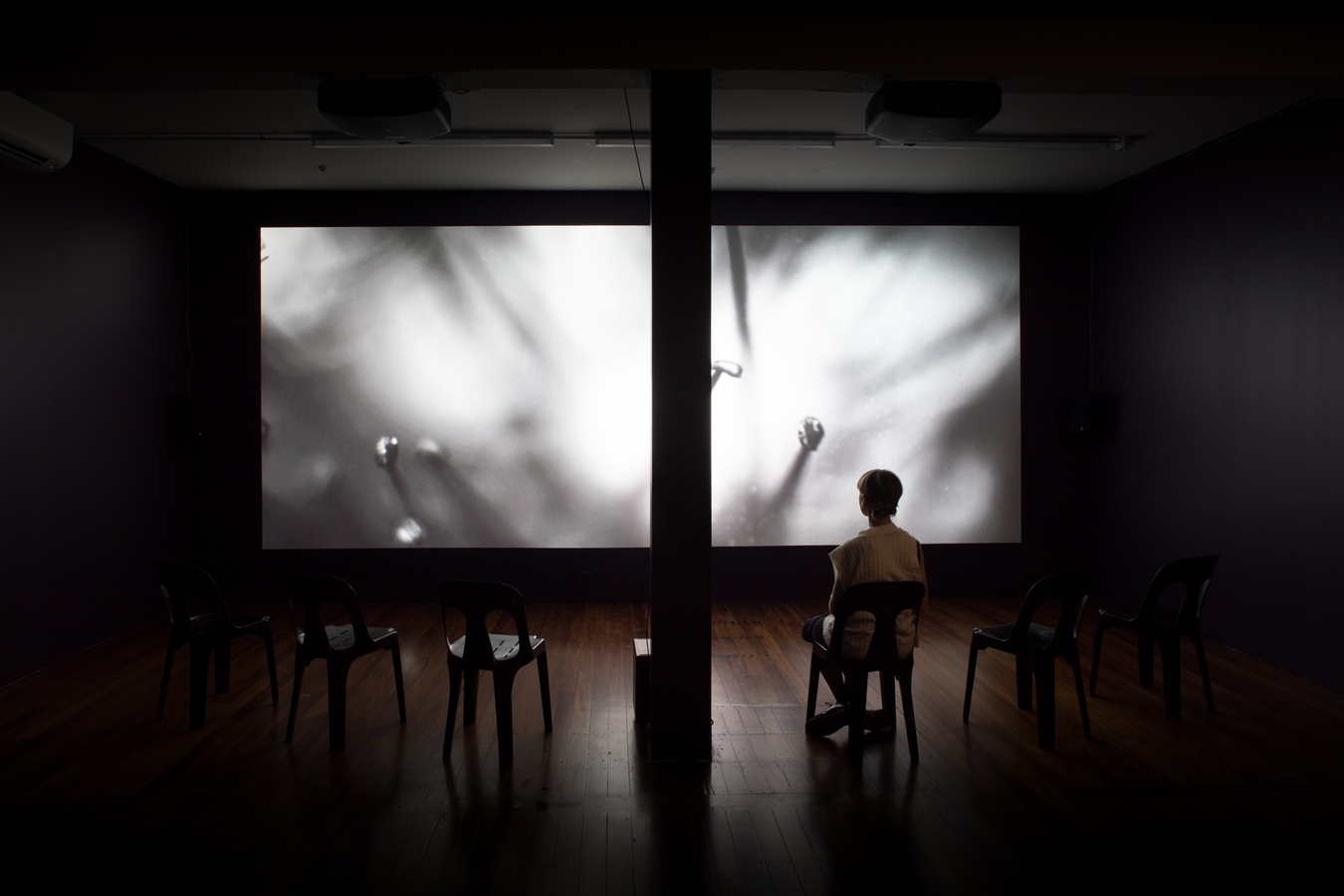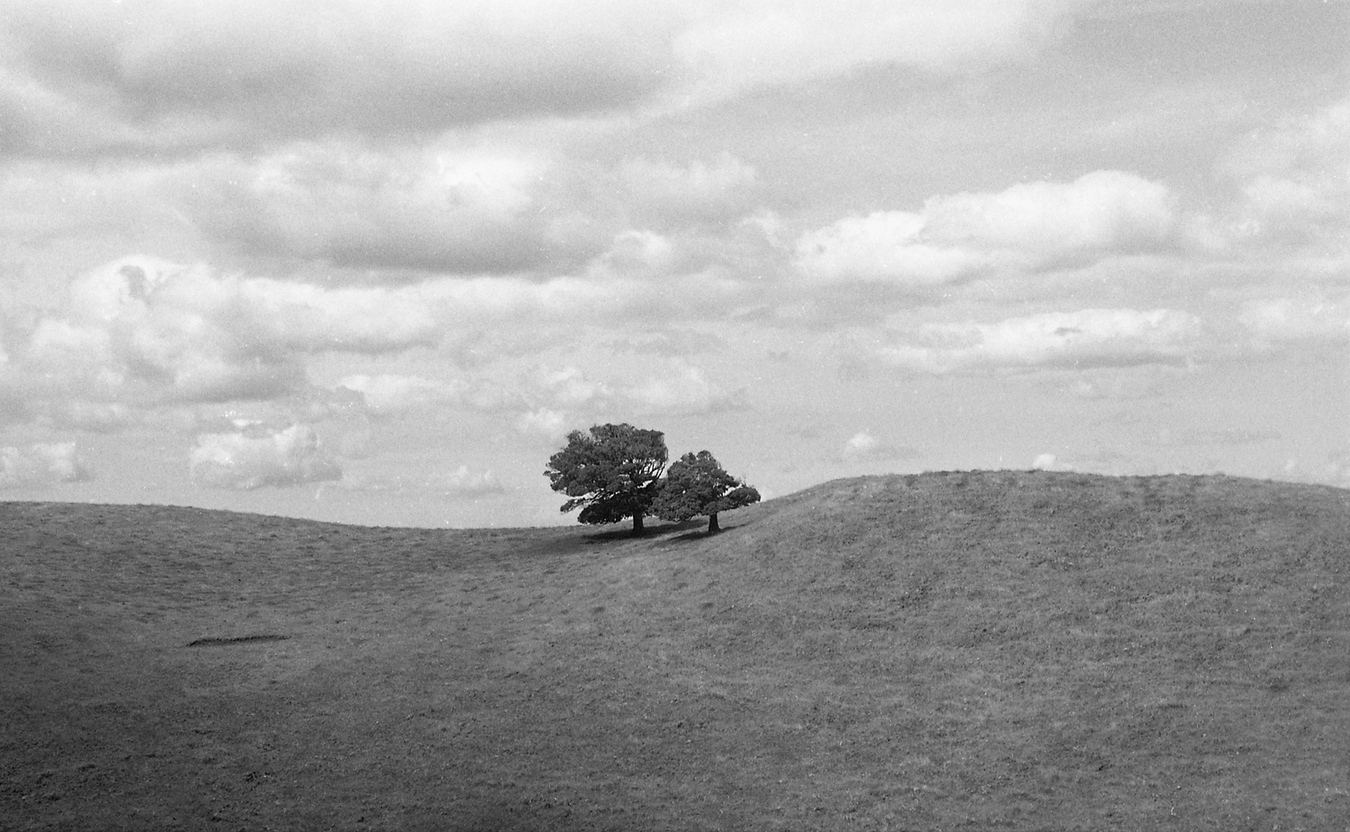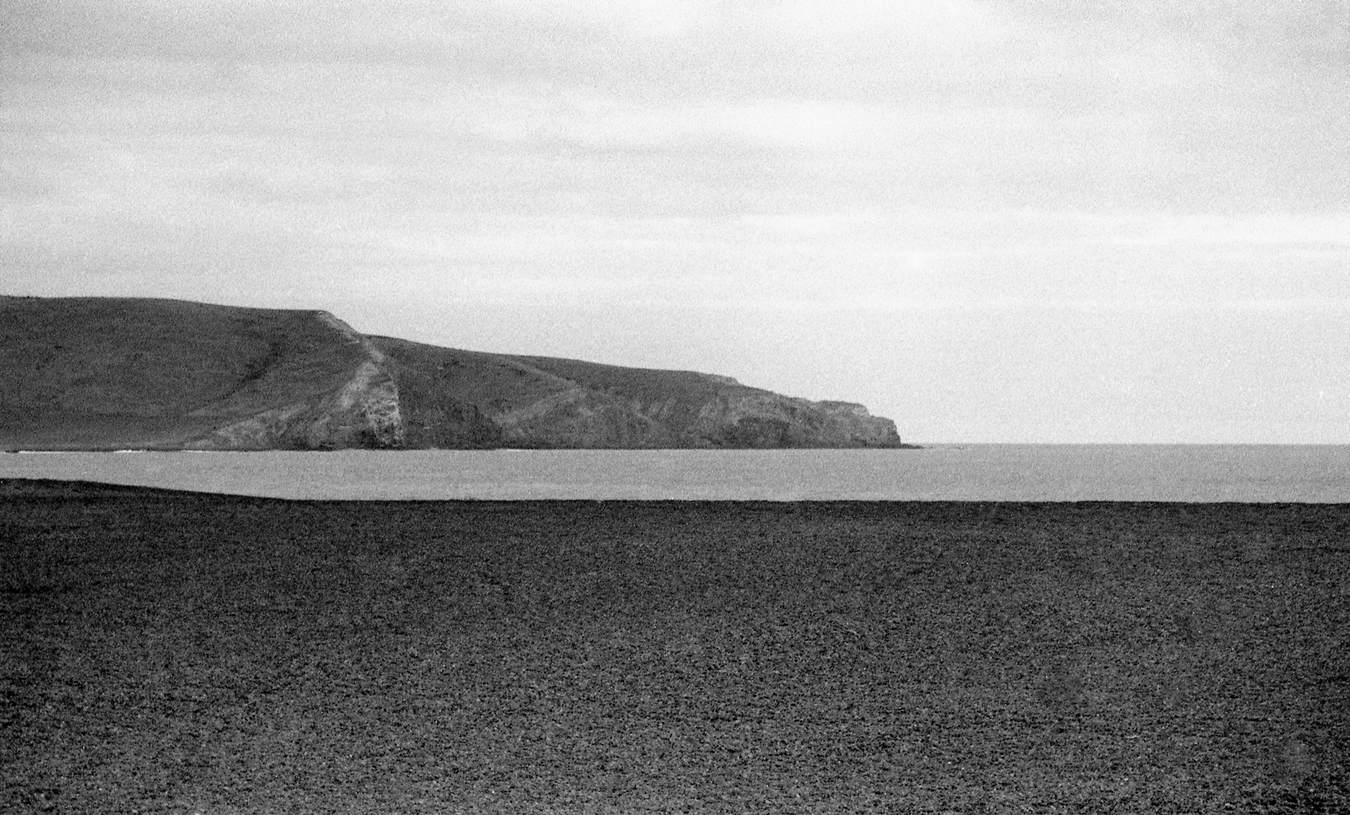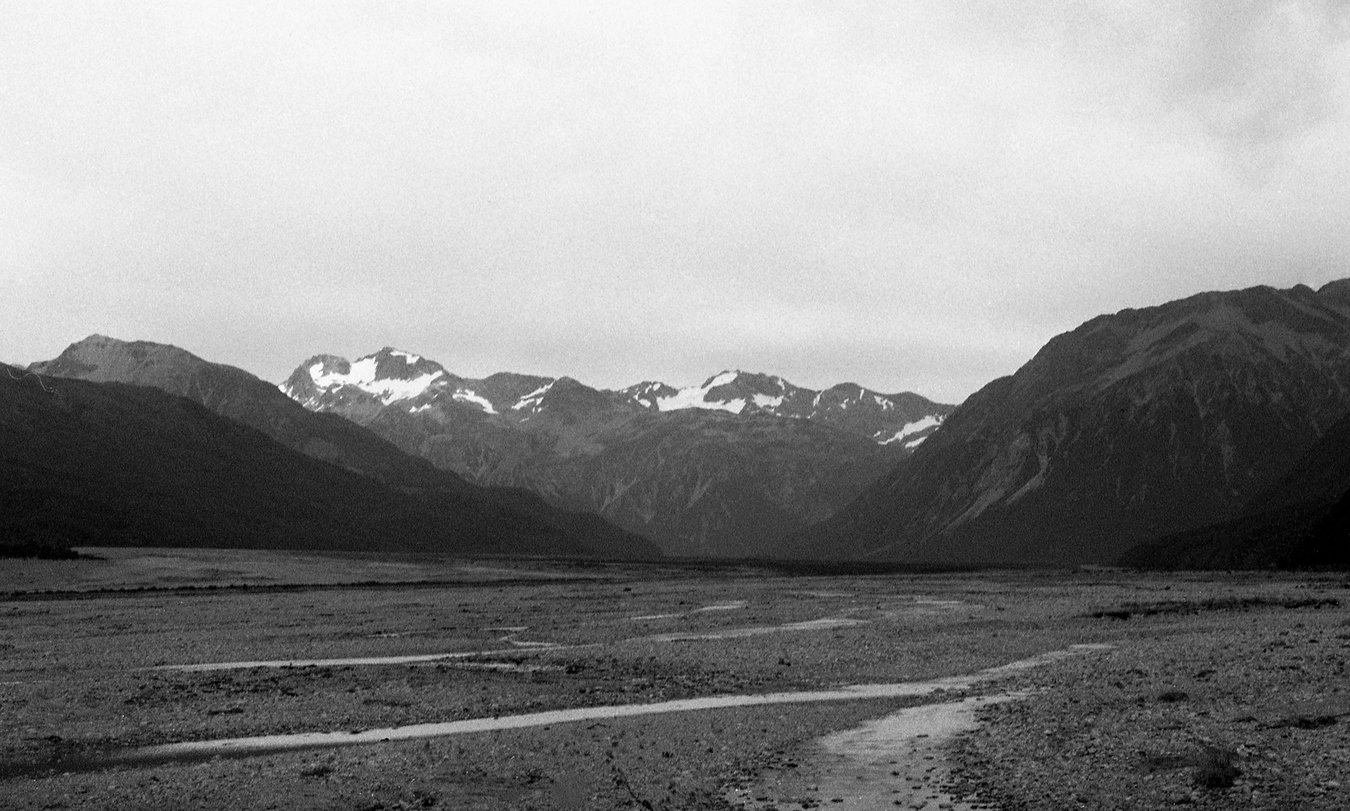Jeremy Leatinuʻu
Te Whakawhitinga
29 Apr — 12 Jun 2022
Te Whakawhitinga
Jeremy Leatinu'u
Curated by Abby Cunnane
Exhibition runs 29 April - 12 June 2022
Director: Jeremy Leatinuʻu
Narrators: Hunaara Kaa & Poata Alvie McKree
Editors: Jeremy Leatinuʻu & Ian Powell
Cinematography: Ian Powell
Composer: Tim Prebble
Sound design: John Gray
Te Whakawhitinga is a haerenga. It is not a long film, about 11 minutes total, but the geography it covers stretches from Te Tai Tōkerau in the North to Ōtautahi in Te Waipounamu; from early adulthood to old age; and from the time of Te Pākanga Tuarua o te Ao, WWII, to the present. Te Whakawhitinga follows this narrative like a stone skimming across water: touching down at points, at others flying across time-space with the clean momentum of recall.
The work tells the story of a young man enlisting, leaving his family’s farm in the Far North and taking the train line South to begin military training. Born and raised in the North, this is his first time away from his home, and the film is underscored by the feeling you might experience at first seeing huge mountains under snow, or a cold grey coastline running alongside the train. While it stems from a specific historical account, Te Whakawhitinga reflects many other stories, of people leaving home and familiar things, struggling and adapting to new situations, and only returning home in their later years.
Commissioned by The Physics Room, work on this project began in early 2021. Since then, Leatinuʻu and cinematographer Ian Powell have travelled from Tāmaki Makaurau where they both live, to Northland and down to Canterbury multiple times, recording extensive footage of land, sea, and rural life, brought together in the final film. Initially shooting both film and digital, during the course of the project Leatinuʻu and Powell chose to work with black and white 16mm film only. This was a commitment to the tone of the story, and to cinemascope format with space for the horizontal reach of the landscape.
Originating in an oral account, Te Whakawhitinga sustains the presence of the voice. While, for the artist, it is important that the story is held in the images, rather than in extensive subtitling (the spoken narrative is all in te reo Māori), listening also is a fundamental part of this experience. Two speakers tell the story: Matua Hunaara Kaa of Ngāti Porou descent and Poata Alvie McKree of Ngā Puhi and Ngāti Kahu ki Whangaroa descent. Leatinuʻu’s work often brings multiple voices into the telling of a story. An earlier film, When the moon sees the sun (2021, commissioned for the Honolulu Biennale), is based on a waiata written for the passing of his koroua; each verse takes the perspective of a different family member. In this way Leatinuʻu opens up the idea of identity as collectively held, and recollection as something formed and reformed in the act of telling.
The work’s title, Te Whakawhitinga, holds this sense of a journey. More literally translated, a crossing. It includes room for spoken exchange too, the back and forth of whakawhitinga kōrero, which unfolds in the film through the voices of McKree and Kaa. Or, less literally, te whakawhitinga is a form of transition. This is one of the most significant things about this work. The film can never hold every detail of a journey, or remember it with precision, and this is not its intention or purpose. Rather, returning to the idea of recall as a skimming stone, what we watch is fundamentally about transition. The film travels on a series of arcs, touching down at points like the stone to the water, each touch generating lift for the next arc. The stone that finally lands, sinks, rests, has been changed through the course of its flight.
Jeremy Leatinuʻu, nō Ngāti Maniapoto and Sāmoa, is an artist based in Tāmaki Makaurau. He graduated with a Bachelor of Visual Arts in 2008, then with a Postgraduate Diploma in Fine Arts in 2009, both from the Elam School of Fine Arts at the University of Auckland.

